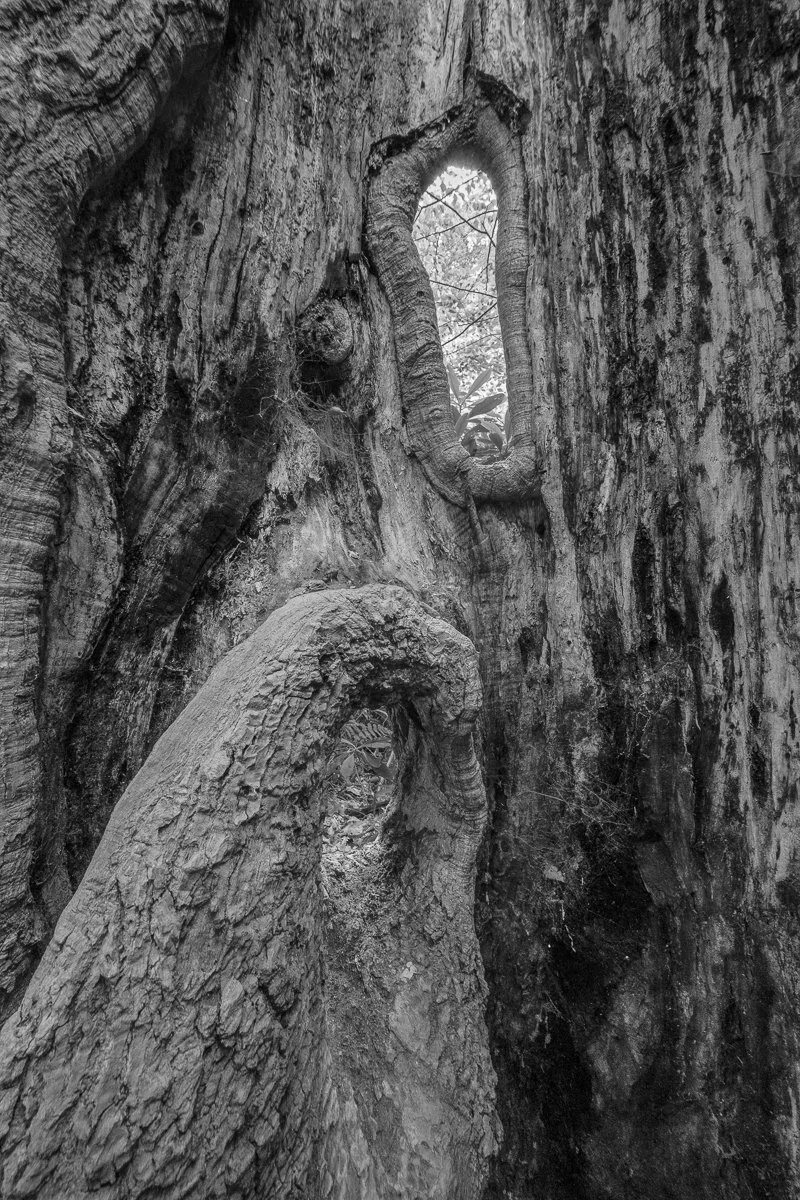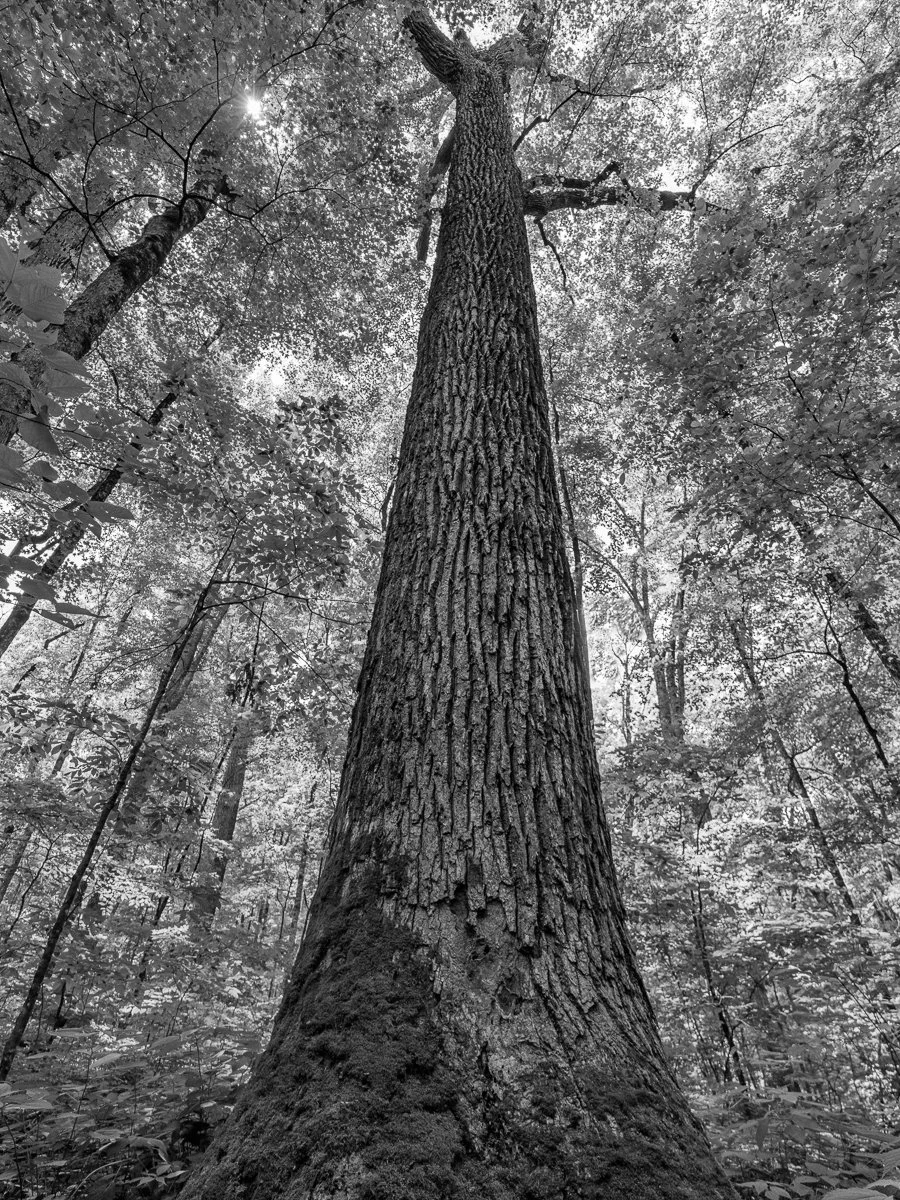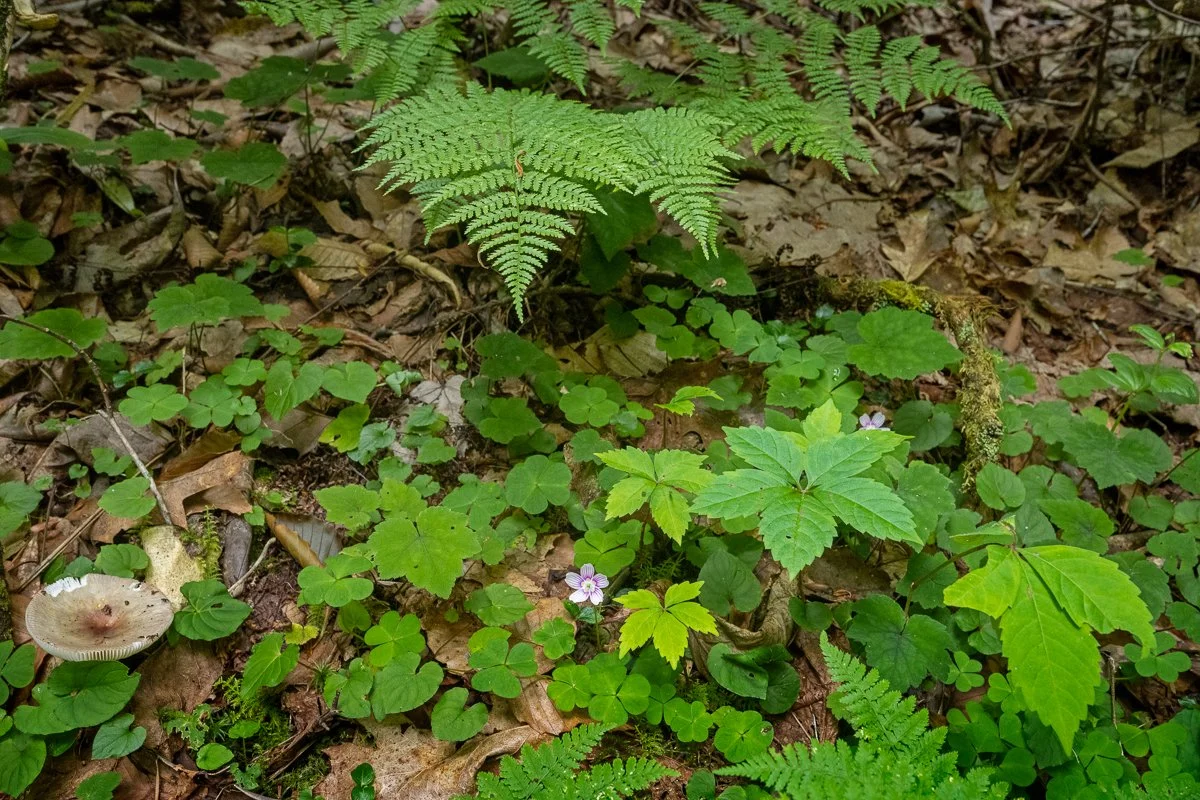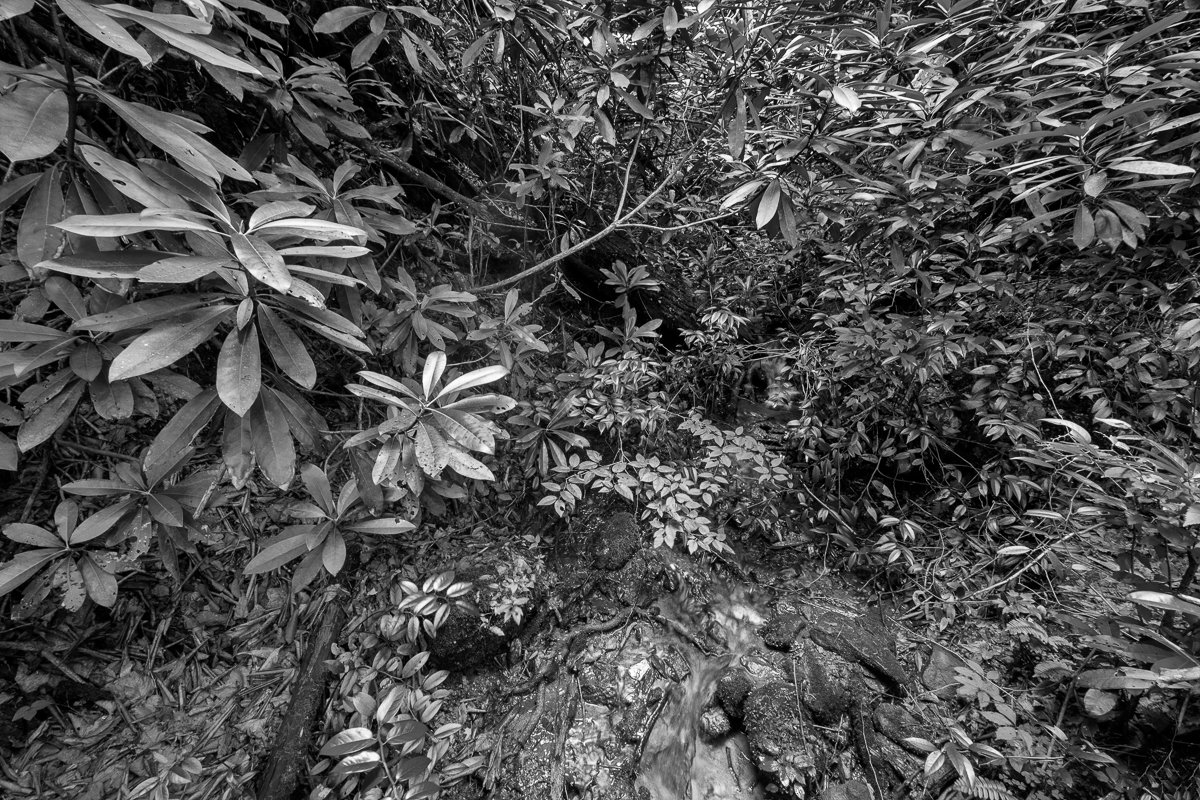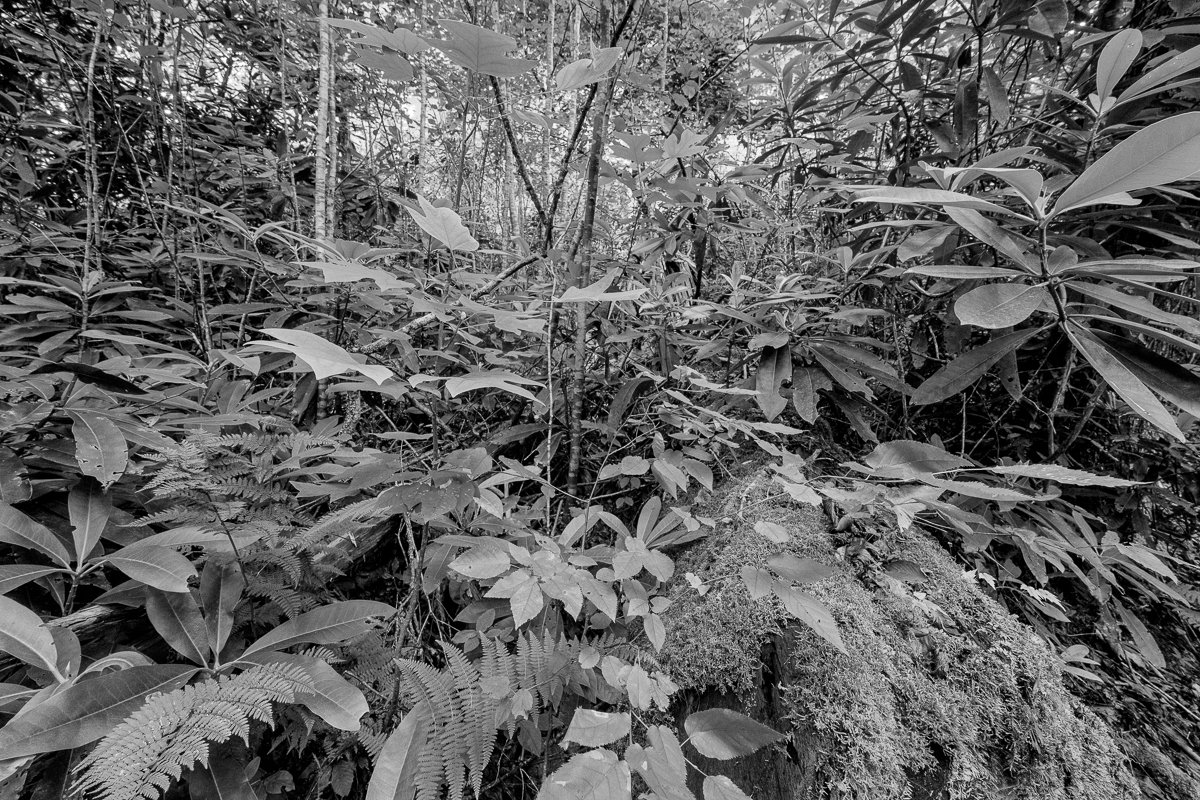Visiting Joyce Kilmer Memorial Forest for the Global Earth Exchange 2023
Survivor
The Joyce Kilmer Memorial Forest is one of the last old growth forests in the Eastern United States. It was set aside as a memorial to Joyce Kilmer, who wrote the poem “Trees,” in 1936. Only one half of one percent of forests in the Southeastern United States are old growth. This forest has suffered two major blights: the chestnut blight in the 1930s and more recently, the hemlock trees died off from the hemlock woolly adelgid. In 2010, the forest service blew up the dead trees with explosives, since they were afraid they would fall on visitors. The lower loop has been completely changed as a result of these blights. Fortunately, the upper loop contains a lot of tulip poplars up to 400 years old that were not affected. The recreation trail I went on was closed from February 2020 until November 2022 as a result of flood damage from increased storms and associated rainfall. The Global Earth Exchange was started by Trebbe Johnson, the author of Radical Joy for Hard Times. It is “a worldwide community of people dedicated to bringing meaning, beauty, and value to places that have been damaged by human or natural acts.” Every year people come together to make an offering of beauty to a wounded place.
I chose this place because of the importance of honoring and preserving old growth forests, because of both their rarity and how they contribute to the environment, even when they appear wounded and harmed. It was named for Joyce Kilmer, a poet and journalist who was killed on a battlefield in France in 2018. This is his poem, for those who don’t know or remember it:
Trees
I think that I shall never see
A poem as lovely as a tree.
A tree whose hungry mouth is prest
Against the earth’s sweet flowing breast;
A tree that looks at God all day
And lifts her leafy arms to pray;
A tree that may in Summer wear
A nest of robins in her hair;
Upon whose bosom snow has lain:
Who intimately lives with rain.
Poems are made by fools like me,
But only God can make a tree.
Inside Looking Out, What the Ancient Tree Sees
To participate in the Global Earth Exchange, you make an offering of beauty somewhere. Accompanied by one of my adult children, we first hiked the lower loop of the Memorial Trail, where the damage from the blights and the flooding occurred. I could not find a place that spoke to me, until we had almost reached the upper loop. There we came upon a tree that was missing its trunk on one side and was hollowed out. It even had two holes in the bark that you could see completely through, which the tree had formed protective bands around so that whatever had harmed it did not kill it. The amazing thing was that above this very damaged section of the tree, the trunk had managed to generate a new section that looked healthy and supported a vibrant canopy which you can see in the preceding photograph. This tree is an amazing survivor and it has so many lessons to teach us all. The phloem somehow managed to transport enough water and nutrients to not just continue existing, but to do so much healthier than I would have expected given the state of the lower section of the tree.
Honoring the Fallen Ones with a Symbolic Protective Screen
The base of the tree on the side where the trunk had completely disappeared was where I decided I should make a small tribute to this forest. I did not, however, want to harm or kill anything in making my tribute, so I collected some twigs, rocks, and a few leaves that were still green from the forest floor. I even found a piece of bark with lichen on it. Then I built a screen across the open area that I felt was symbolic of protection for this forest, as well as a tribute to the fallen ones.
Towering Presence, Joyce Kilmer Memorial Forest
After visiting the Albright Grove a few months before and seeing all the fallen trees, I became so heartbroken that I ended up doing more research on old growth forests. I learned that they are actually more rather than less resilient to climate change than younger forests due to their roots and all the nutrients they provide for the soil, even after they have died. When forests are clearcut, the soil is much less healthy. The fungi and biomass is disturbed, the land is more prone to runoff, and trees are more likely to topple and die. Old growth trees sequester a huge amount of carbon, and if they are harvested they will release a lot of carbon back into the atmosphere. Thankfully, modern forestry practices advise leaving the dead trees where they fall. When the fungi breaks them down, they provide nutrients for the forest, as well as sheltered places for creatures to live. Even the day I was in the Albright Grove and was feeling so depressed, I still took note of the wildflowers, ferns, and other biodiversity on the forest floor. In clearcut forests, invasive plants are more likely to overtake native flora and fewer nutrients are provided for the biosphere. The trees become less healthy too. I wanted to offer the Joyce Kilmer Memorial Forest an act of beauty in appreciation for the thriving life that still exists there and in recognition of all that this and other old growth forests do for the environment. Old growth forests store the vast majority of carbon on the planet and will continue to do so as long as they are not cut down or burned. However, I should note that there is currently a debate as to whether younger or older trees take up more carbon. Younger trees may take in more carbon, but as they age they will take in less and when they are younger they are more prone to suffering from the effects of climate change and dying. All forests deserve protection, because the trees that are alive now are what are helping offset carbon. It takes decades for reforestation to make an impact. Another reason to protect Joyce Kilmer, the Albright Grove, the Pisgah forest, and other tracts with old growth trees is that the loss of forest canopy is greater in the Southeastern United States than anywhere on the planet, due to the wood pellet and biomass-burning industry. Climate change is having a huge impact on all lifeforms and in the future trees may not live as long as trees have in the past. This should inspire us to be even more conscientious about preserving all our forests. Forests that are not old growth yet, will become old growth forests in the future if they aren’t cut down. Old growth forests have trees that are at least 120 years old, but many existing old growth forests have trees that are 200 to 400 years old. The upper loop of Joyce Kilmer still has examples of trees that are this ancient.
Forest Floor, Joyce Kilmer Memorial Forest
In areas that have not been clearcut, there is a lot more biodiversity on the forest floor. On the trail we saw many ferns, fungi, and these beautiful wood sorrel with clover-like leaves.
Where the larger trees had fallen and the canopy had opened up a bit, there was a lot of new growth on the forest floor. Despite how much this forest has suffered, there is still so much life to appreciate. Yes, it is sad that these blights have killed trees, but trees also die from old age, lightning strikes, and other natural causes. There is no doubt that climate change is impacting our forests, both in terms of fires in the West and Canada and floods in the East, especially the Appalachians, and if we don’t protect our forests we will be in even greater trouble. Forests are resilient though, so if we change our mindset and protect forests instead of believing reforestation will solve all of our problems and then cutting these trees before they become old growth, forests that are younger will have the opportunity to grow into old growth forests and our health and the health of the planet will benefit.
Below are some links to a few of the articles I found interesting, if you want to learn more. There are many others as well.
https://e360.yale.edu/features/why-keeping-mature-forests-intact-is-key-to-the-climate-fight
https://www.uvm.edu/news/story/new-forestry-old-growth


